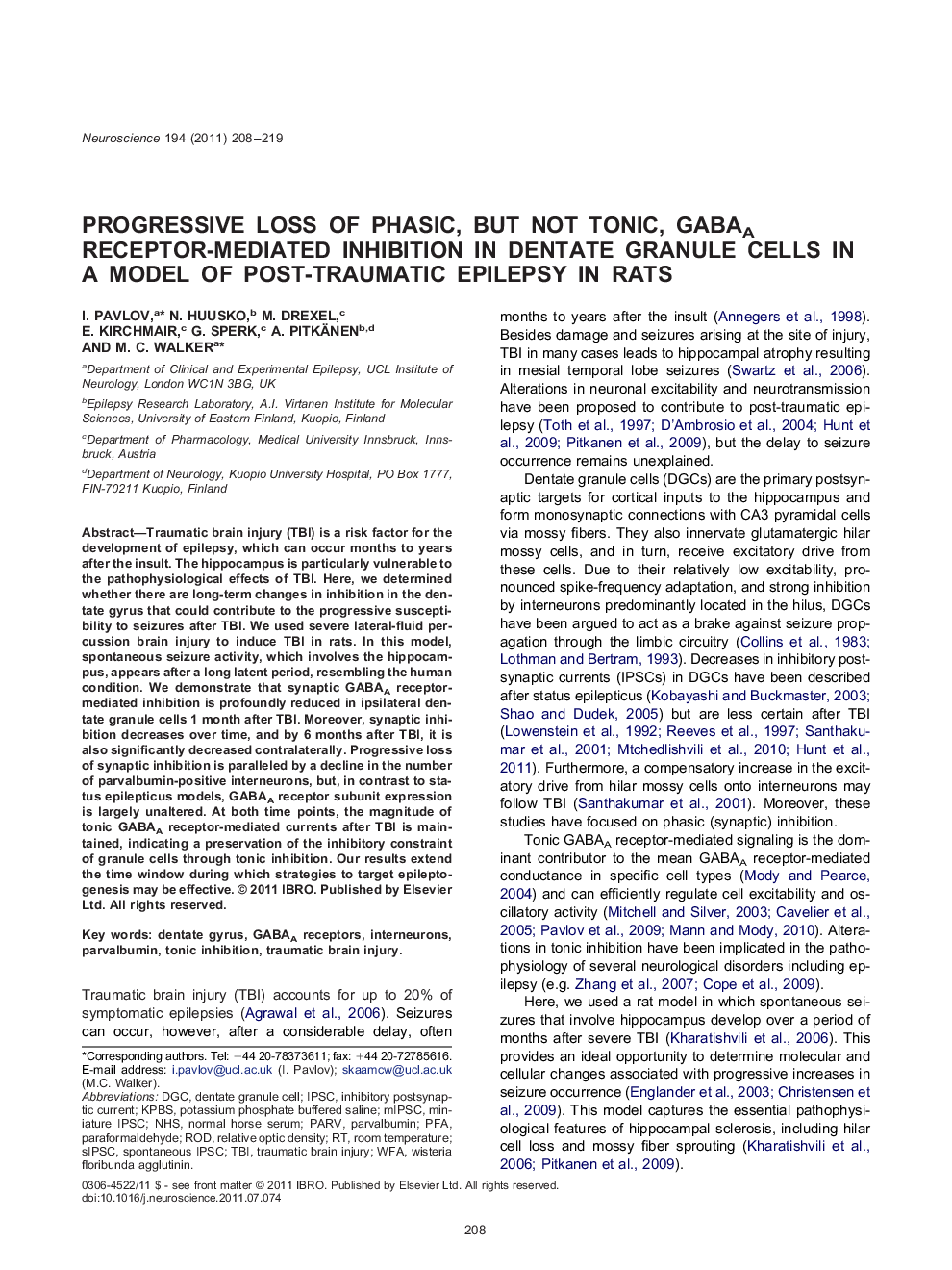| Article ID | Journal | Published Year | Pages | File Type |
|---|---|---|---|---|
| 4338811 | Neuroscience | 2011 | 12 Pages |
Traumatic brain injury (TBI) is a risk factor for the development of epilepsy, which can occur months to years after the insult. The hippocampus is particularly vulnerable to the pathophysiological effects of TBI. Here, we determined whether there are long-term changes in inhibition in the dentate gyrus that could contribute to the progressive susceptibility to seizures after TBI. We used severe lateral-fluid percussion brain injury to induce TBI in rats. In this model, spontaneous seizure activity, which involves the hippocampus, appears after a long latent period, resembling the human condition. We demonstrate that synaptic GABAA receptor-mediated inhibition is profoundly reduced in ipsilateral dentate granule cells 1 month after TBI. Moreover, synaptic inhibition decreases over time, and by 6 months after TBI, it is also significantly decreased contralaterally. Progressive loss of synaptic inhibition is paralleled by a decline in the number of parvalbumin-positive interneurons, but, in contrast to status epilepticus models, GABAA receptor subunit expression is largely unaltered. At both time points, the magnitude of tonic GABAA receptor-mediated currents after TBI is maintained, indicating a preservation of the inhibitory constraint of granule cells through tonic inhibition. Our results extend the time window during which strategies to target epileptogenesis may be effective.
Graphical Abstract•••Figure optionsDownload full-size imageDownload high-quality image (114 K)Download as PowerPoint slideHighlights▶Synaptic inhibition in dentate granule cells is reduced after TBI. ▶This is associated with a loss of parvalbumin-positive interneurons. ▶The loss of inhibition is progressive and continues over period of several months. ▶Tonic inhibition remains unaltered after brain injury.
